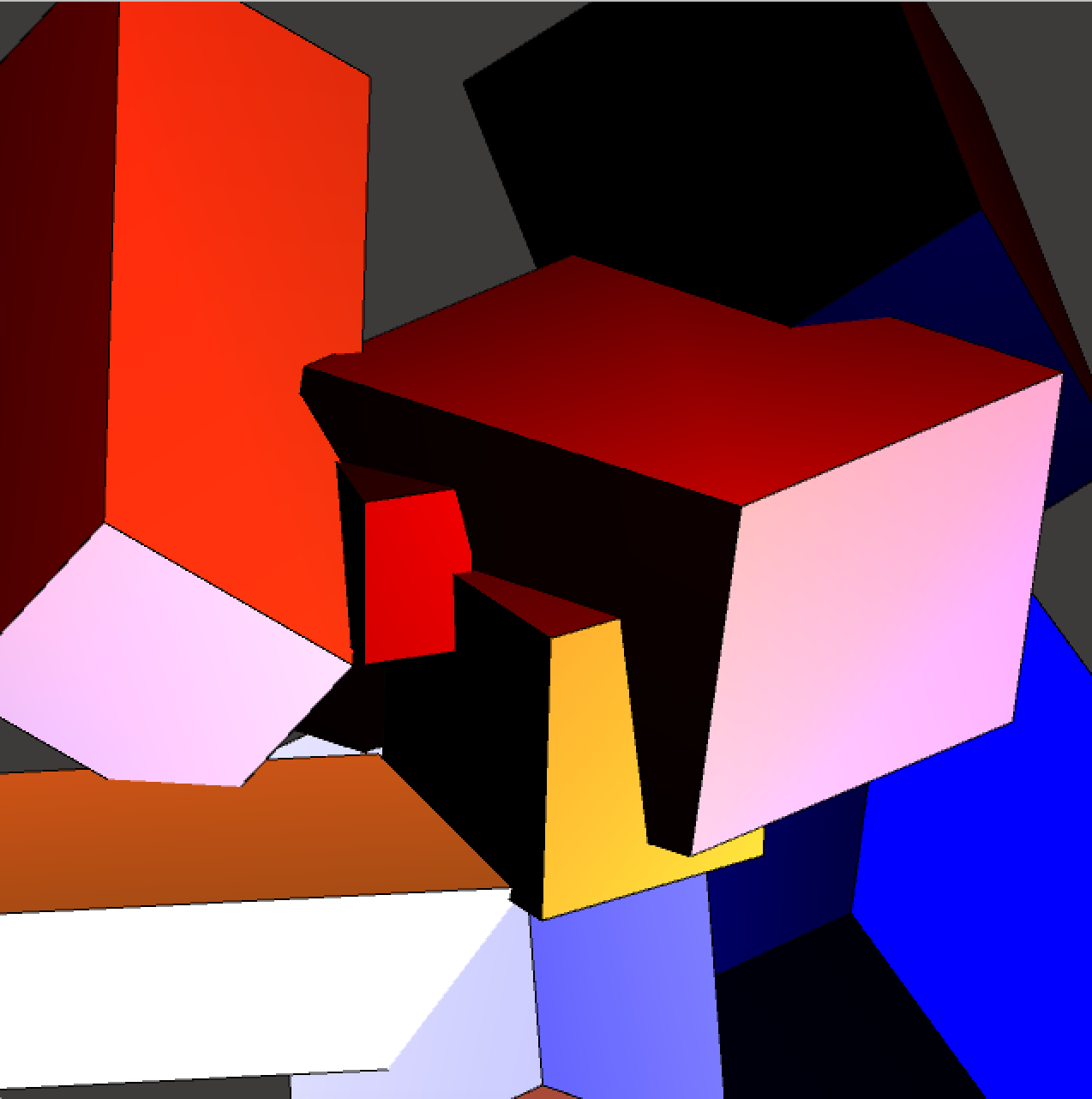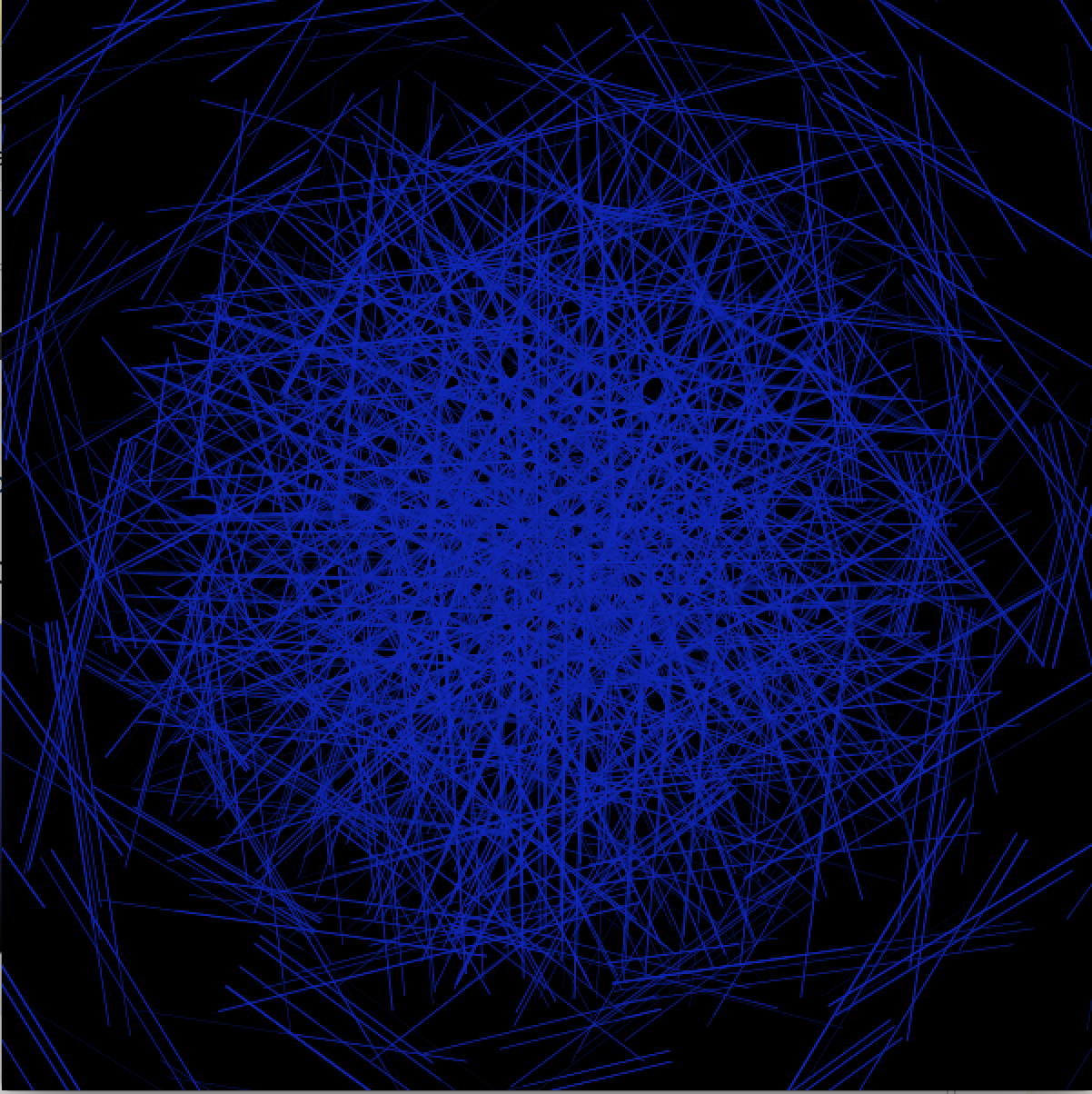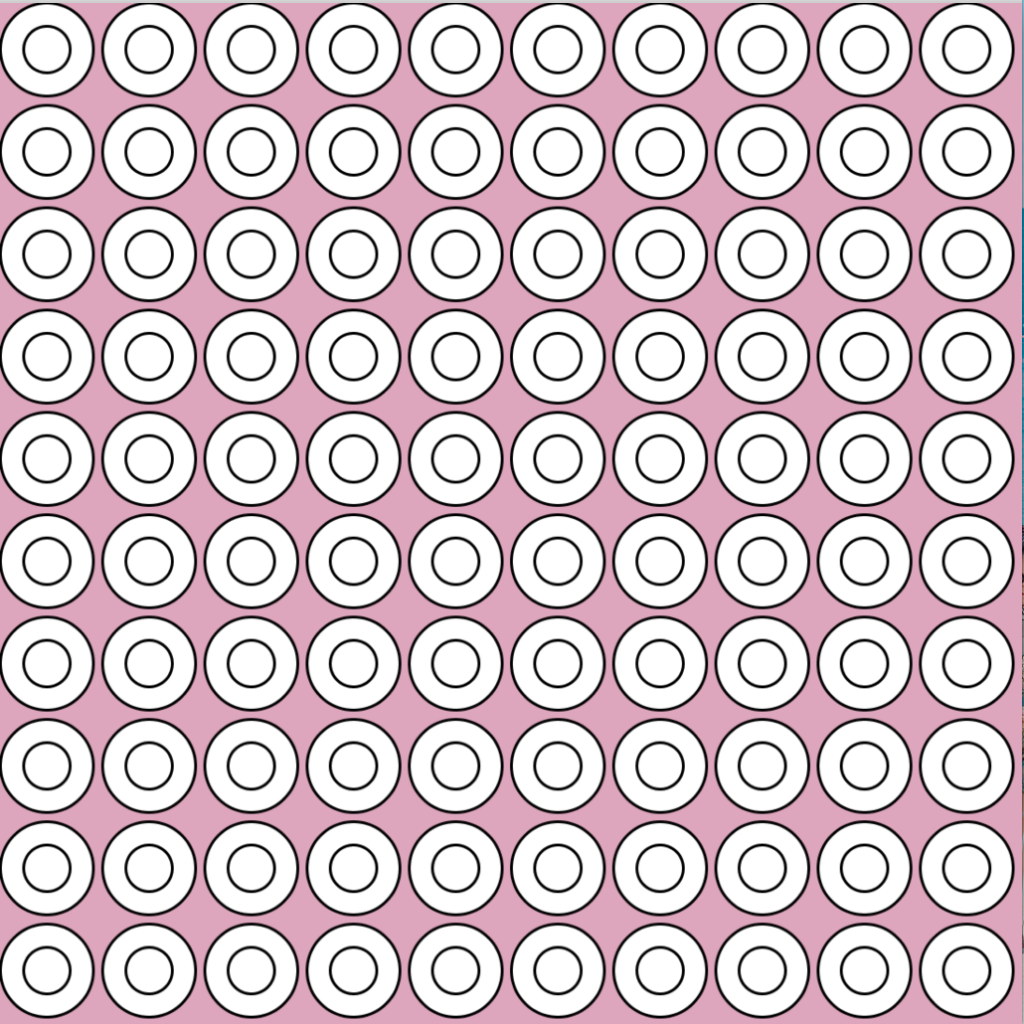
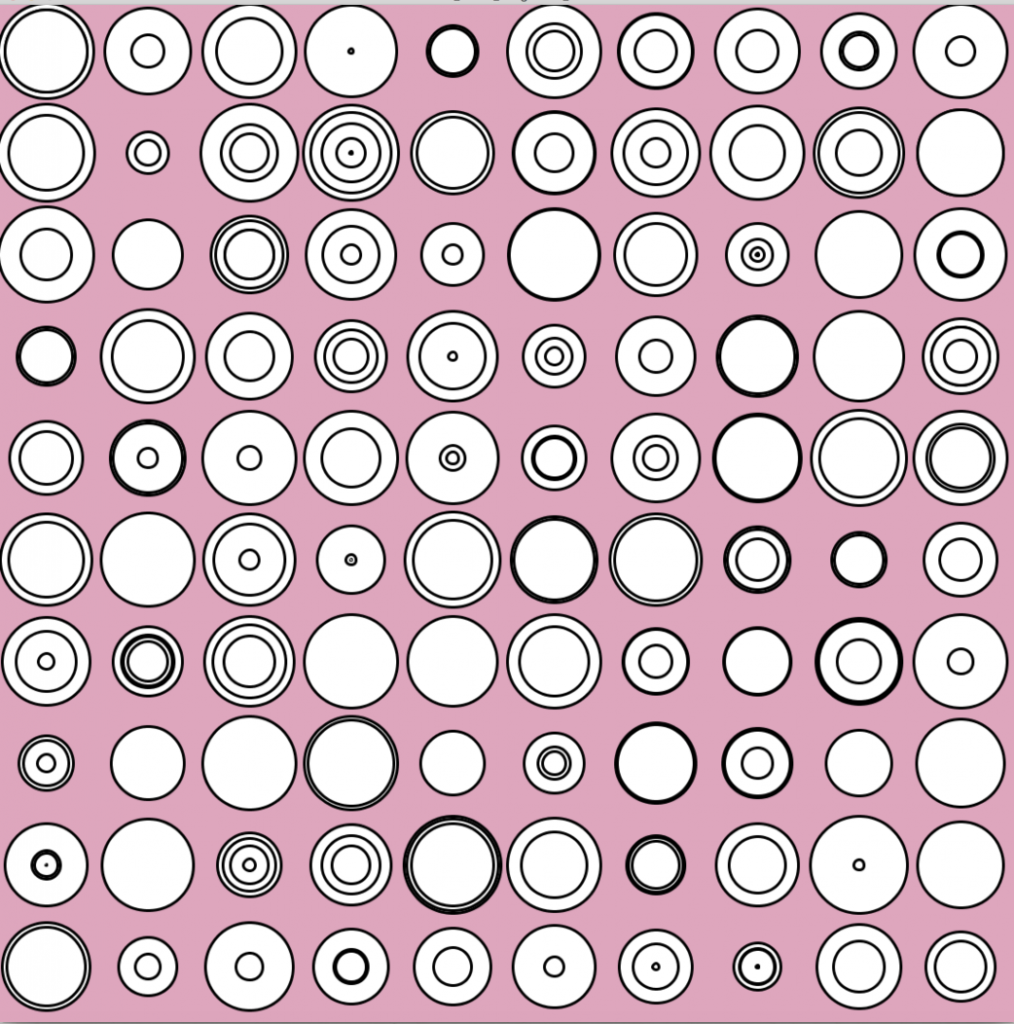

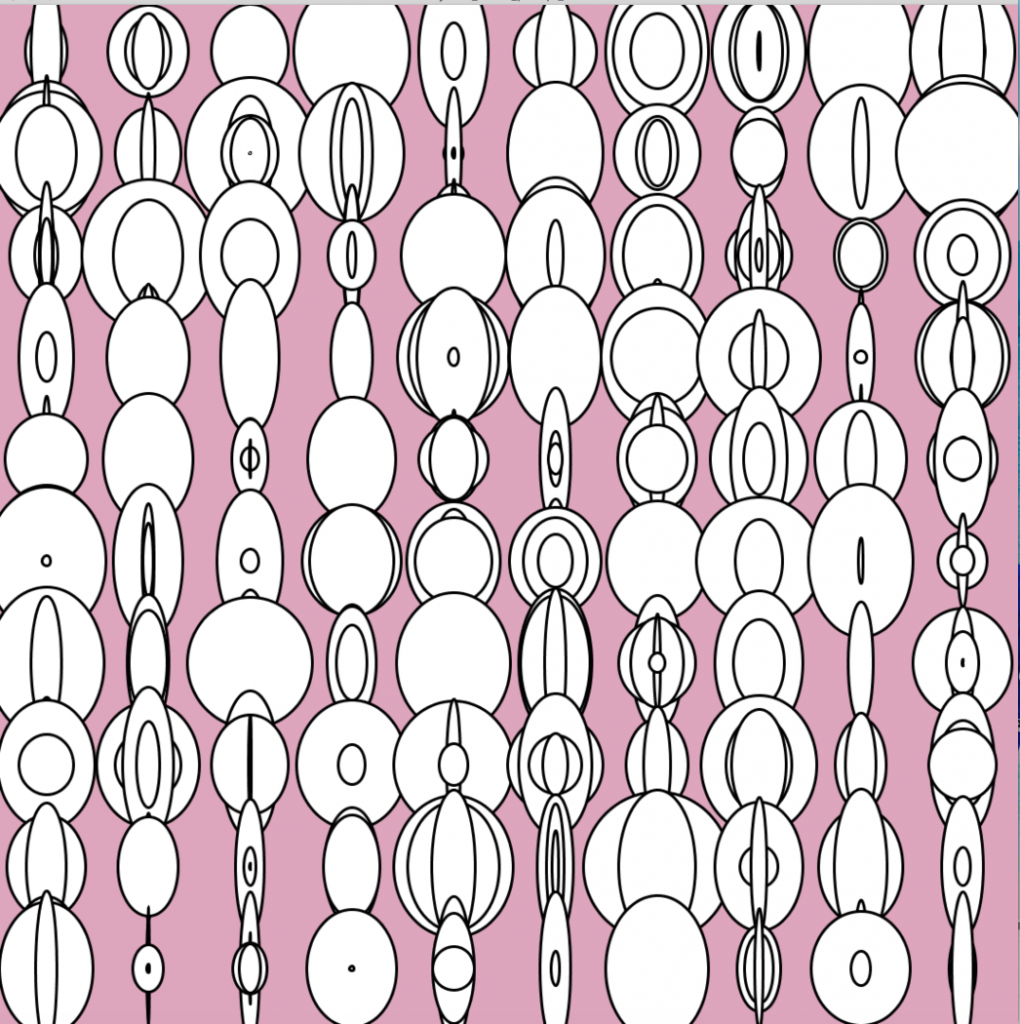
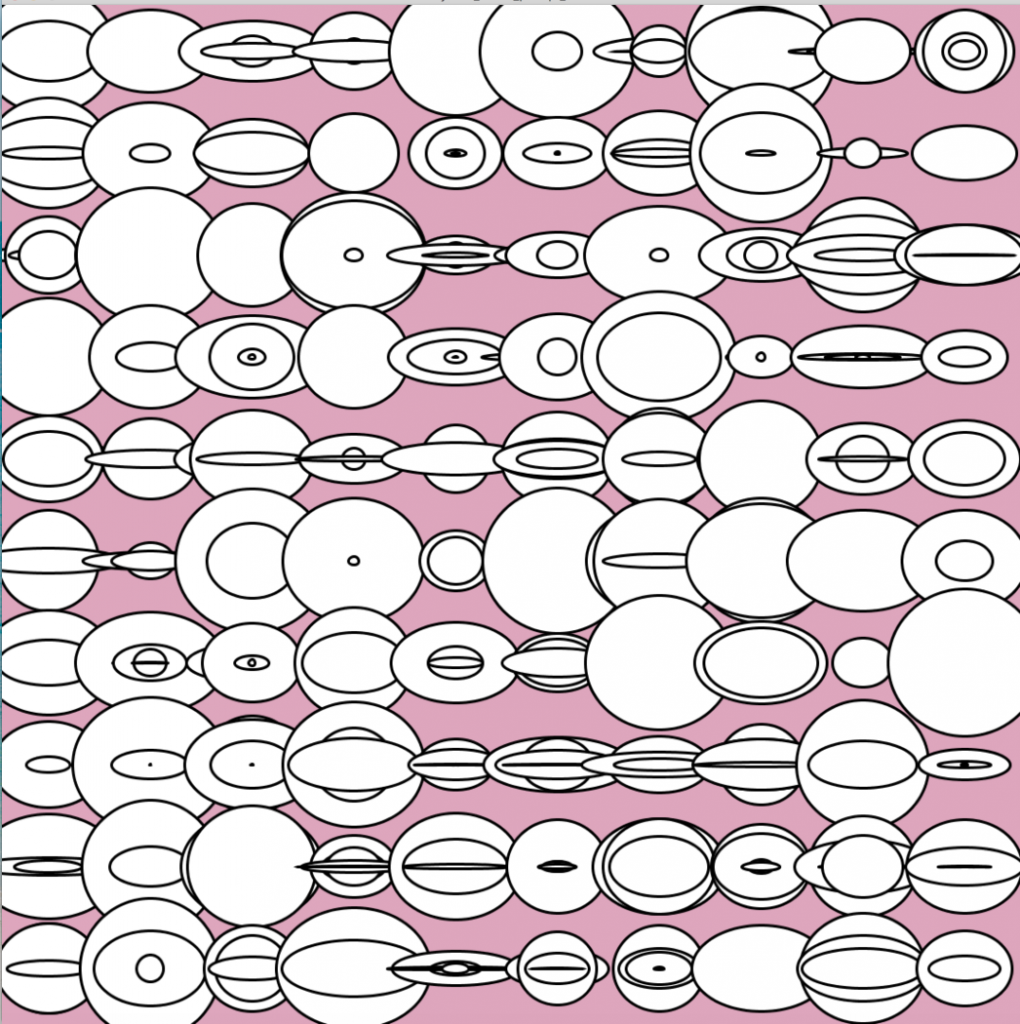
These five images are a series of images respond to Vera Molnar’s grid works. I followed the strategy that Vera used when she tried to develop a series of pictures. I first come out my idea of a new picture quickly and then modify it. Since the basic geometrical shapes have created, other modifications are relatively easy to make. I change one parameter each time and then compare them to each other to see if those changes are clear for viewers and see if I feel the image is aesthetically appealing.
Repetition is the keyword of this series of work. Repetition itself is an annoying word, but it is applied differently in this series of images. Vera Molnar states that she does not believe art is solely intuitive. Instead, every artist must have an initial idea to develop his or her works. She loves seeing what changes have occurred in the picture she is working on can please her, and she finds out that her final picture rarely corresponds to her initial idea. I guess this is the glamour and the consequence of doing repetition in this process. I would say having repetition is meaningful and crucial for an artist because it can be a process for the artist to explore some brand new ideas or even doubt her initial idea. This repeatedly tedious process could lead the artist to finally reach the one she feels satisfied even though it might be irrelevant to her initial idea. In other words, repetition can be an opportunity for artists to have an inner conversation with themselves. What do I want? What can make the viewer and me satisfied?
Molnar uses Claude Monet as an example in her writing. Monet painted most of his works repeatedly in different lighting and color. I love Monet’s works. Even though most of them are painted from the same perspective, and they are describing the same object, you can always get something new or different emotions by looking them either together or separately. In short, I think repetition is beneficial for artists both when they develop their ideas and the structure of their works.
In computer art, computation is a great aid to repetition. The reason is that you can easily control your parameters and it takes you a shorter time to try them out, including changing shapes, scales or colors. When you are done with your changes, you can compare them directly through the screen. Computation leads everything to be more clear and convenient, especially when you do repetition for a series of images. I would say repetition also has the creative side since you do not precisely know what is going to show up on your screen when you change that one parameter. The significant aspects of repetition can be found not only in a series of images but a single image. The reason is still that I believe repetition can be a process of exploring new ideas and creating new patterns for your pictures, which can also be applied in creating a single image.
The most exciting aspect of gradualism to me is that it can let both artists and viewers observe those changes and see how those tiny changes can make the images different from each other in a coherent way. I think this is basically what gradualism itself means and what gradualism means in this series of images: changing gradually and happening overtimes within small steps.
As we know, there is a debate about whether computer art can be considered as a form of art. In other words: is it a form of visual arts or is it only computer-generated imagery, a computer product? One of the reasons people have this debate is that some people think ‘the machine generates the work’ and the randomness in it is not acceptable to call it art. I think those computer images are pieces of art, but not the entire effort governed by the machine. To me, this blurring boundaries between art and science create the beauty of unexpected art pieces. When I set ‘random’ to one of my parameters, I always get some unexpected results. But I modify those randomnesses till I find it is aesthetically appealing. I regard the randomness as an essential part of my works, and a computer can provide me this opportunity to explore those unexpected patterns.
Art will never wholly become science and science will never entirely become art. The blurring boundaries between them can create another form of beauty. An artist should embrace these boundaries to do more creative works within his own taste. A scientist should welcome these boundaries to help the movement of the computer in another form, a more artistic way. The debate is needed in this world, but no one should give up on his own ‘tastes’ in order to please others.
